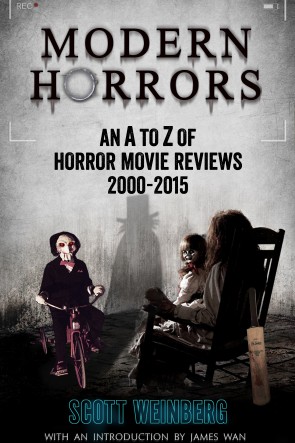Review: THE WOMAN IN BLACK: ANGEL OF DEATH (2015){0}
No matter what happens to be in fashion within the horror genre in any given year, it seems that there will always be room for haunted house stories. Zombie tales, slasher flicks, and biological mayhem seem to wax and wane in their popularity but not haunted house movies: from The Old Dark House (1932) to The Conjuring (2013) – and hundreds of films in between – audiences never seem to get tired of innocent people poking through creepy old houses while something supernaturally unpleasant takes place.
Which logically brings us to The Woman in Black: Angel of Death (aka The Woman in Black 2: Angel of Death), a sedate, atmospheric, and (almost) entirely predictable follow-up to a movie that, while certainly solid enough, probably didn’t demand a Part 2, especially one absent the first film’s star, Daniel Radcliffe. Indeed, the only characters who return for the sequel are the titular woman and the monumentally creepy domicile in which she resides – but hey, the first movie was a solid enough hit (especially in its native Britain, where the hit stage play based on Susan Hill’s bestseller continues to pack them in night after night), so who can blame Hammer Films for trying to bang out a second chapter?
Fortunately, for all its stock scares and generally predictable plot machinations, there’s actually quite a bit to like about The Woman in Black: Angel of Death: the 1941 setting is a nice switch for those who are used to modern horror stories; the massive “Eel Marsh House” is as ominous as ever; and the set-up employed to get a new batch of victims stuck inside the edifice is rather quaintly compelling: two schoolteachers have taken eight children to the distant mansion in an effort to keep them safe during the horrific air raids of WWII – and it doesn’t take long before “the woman in black” sets her sights on one of the kids.
This simple but creative story hook quickly provides us with at least one grown-up heroine to get behind, not to mention a handful of unhappy kids to worry about – and then it’s pretty much a comfortably familiar tale of dark secrets, hidden passages, sudden jolts, and things that go bump in the night.
As this is a Hammer production, you can expect some wonderfully eerie production design, some crisp and clever cinematography, and a spooky musical score, even when you’re dealing with a few obvious story points you can see coming a few miles away. Leading lady Phoebe Fox does a fine enough job with a simplistically written character; young Oaklee Pendergast also provides a solid performance despite not having any lines (horror movie kids are creepy that way.) But make no mistake: in this movie, the house is the star.
An admirably old-fashioned ghost story mixed with just a dash of “evil kid” thematic material, The Woman in Black: Angel of Death isn’t quite as quietly compelling as its predecessor, but it still works as a classy and refined example of how to revisit the “vintage” horror vibe without resorting to silly humor, sloppy gore, or stupid irony.
Scott Weinberg








